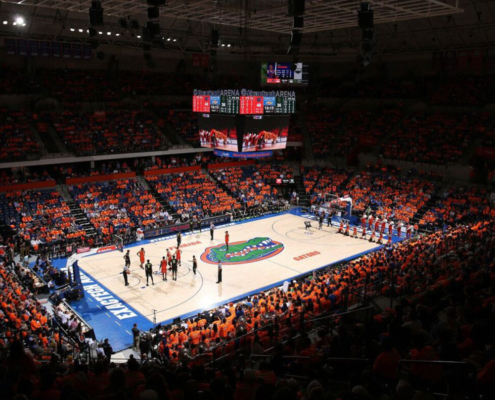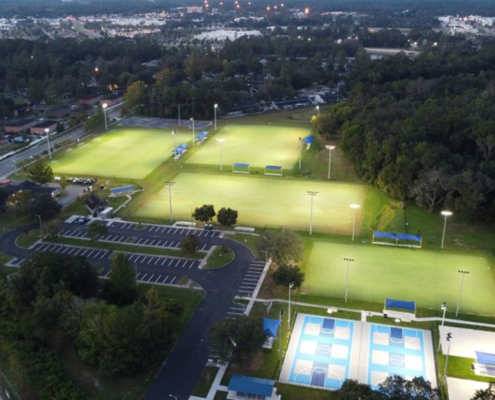 https://ngusportslighting.com/wp-content/uploads/2022/05/Homepage-Banner-2-Florida-Gators.jpg
1250
2000
AbstraktMarketing
/wp-content/uploads/2022/08/NGU-Full-Logo.png
AbstraktMarketing2024-06-18 14:33:252025-07-09 15:27:23University LED Arena Light Fixtures Guide: Types, Cost & Funding
https://ngusportslighting.com/wp-content/uploads/2022/05/Homepage-Banner-2-Florida-Gators.jpg
1250
2000
AbstraktMarketing
/wp-content/uploads/2022/08/NGU-Full-Logo.png
AbstraktMarketing2024-06-18 14:33:252025-07-09 15:27:23University LED Arena Light Fixtures Guide: Types, Cost & FundingBenefits of Solid-State Lighting
Facility managers are responsible for producing a visible, well-lit production for players, staff, spectators, and fans at home. At the same time, they also have to make sure everyone feels safe within the vicinity. Solid-state lighting has been revolutionizing the lighting industry over the past decade, especially in sports arenas and stadiums across the country.
In this article, we’ll talk about what solid-state lighting is, the benefits of solid-state lighting, and different products companies like NGU Sports Lighting offer arenas and stadiums. Here’s everything you need to know about solid-state lighting fixtures:
The Basics of Solid-State Lighting
Solid-state lighting has become an increasingly popular technology over the last decade for various industries, including sports, with different types such as light emitting diodes (LED), organic LEDs, and polymer LEDs. Solid-state lighting has replaced almost all traditional incandescent and fluorescent bulbs and lamps for companies and facilities.
What Is Solid-State Lighting?
Solid-state lighting fixtures produce visible light through electroluminescence. This source replaces traditional fixtures that produce light through electrical filaments, gas, or plasma. Electroluminescence begins with electrical currents passing through semiconductor diodes, causing the source to glow. The light then becomes visible through heat generation, with less energy dissipation involved in the process.
LEDs have been used for over 50 years as indicator lights in electronic devices. Beginning over the last few decades, solid-state lighting in the form of LEDs was first utilized in traffic lights and street signs for larger-scale purposes. Large corporations, industrial facilities, arenas, stadiums, and other buildings began adopting LED lighting in the past 10 years due to energy efficiency and cost-saving benefits.
Solid-state lighting is quickly becoming the most popular and utilized lighting component, offering durability, efficiency, and convenience with smaller and more flexible lighting fixtures. Especially in sports facilities, providers like NGU Sports Lighting have changed the game with efficient and reliable LED lighting.
Why Solid-State Luminaires for Sports?
There are many benefits of solid-state lighting for sports facilities that teams across the nation have switched to over the past decade. From a facility manager’s standpoint, quality lighting has to be provided onsite and over the broadcast without compromising the safety of anyone. Listed below are a few reasons these lighting fixtures are optimal for sports:
- Energy Efficiency: Solid-state lighting or LED lighting is the way to go for outdoor or indoor venues. This type of lighting cuts energy usage rates by more than 70%. With how often sports facilities are used, it’s important to choose a lighting source that is cheap, efficient, and easy on the environment.
- Versatility: Solid-state lighting can be used on the field or in any other part of the arena or stadium. This type of lighting is also best for its quick warm-up periods, reaching 100 light visibility seconds after being turned on. Traditional lighting sources lack versatility in warm-up speed, taking up to 15 minutes to reach full power.
- Appearance: Solid-state lighting was quickly developed by television crews once LED technology boomed. Lighting capabilities reduced a long-standing issue of flickering on broadcasts with traditional fixtures, especially during slow-motion replays. Solid-state lighting isn’t just great for broadcasts; it’s the brightest source for your facility. LED lighting lasts longer, and never develops a red or dim shade over time, which is common in traditional lighting.
Are you considering installing or switching to solid-state lighting for your sports facility? Check out how LED lighting is more efficient than traditional incandescent and fluorescent sources.
Benefits of Solid-State Lighting
Solid-state lighting was first used for traffic control, but has since spread for various commercial and residential purposes, especially in sporting environments. This advanced lighting technology offers cost savings, lower energy consumption, and reduced maintenance. Below, we’ll take a deeper dive into the major benefits of solid-state lighting:
Durability
Solid-state lighting doesn’t contain glass or other filament material that could break, reducing maintenance costs and eliminating safety hazards. This form of illumination withstands almost all vibrations and disruptions and has an immediate warm-up period.
Longevity
Traditional lighting typically lasts through 1,000 hours of usage. All types of solid-state lighting shine between 50,000 to 100,000 hours. By choosing this lighting for your arena or stadium, you eliminate almost all maintenance repairs, with rare and little replacement.
Energy-Saving
Solid-state light bulbs use almost 90% less power than traditional types of lighting. Switching significantly boosts your facility’s energy efficiency.
Cost-Saving
Choosing solid-state lighting immediately reduces maintenance costs in your budget, allowing your team to allocate funds to other areas of your facility.
This type of lighting is not only the future of sports, but can strengthen the overall U.S. economy by reducing greenhouse gas emissions. The United States Department of Energy has estimated that solid-state lighting can reduce electricity use by over 50%, saving the country upwards of $30 billion by 2030.
Solid-State Lighting Products
LEDs, organic LEDs, and Polymer LEDs are the different types of solid-state lighting. These light sources are smaller and lighter than traditional components, provide greater resistance to shock and vibration, and have a unidirectional distribution of visible light. Outlined below are different solid-state lighting products:
Light Emitting Diodes (LED)
An LED is a semiconductor device that uses electric currents to emit light. The semiconductor’s energy band gap then determines the color of the LED. Electrons and holes within the LED are found in energy bands. Band gaps determine the energy of photons an LED produces, completing the process. Companies like NGU Sports Lighting offer the best LED fixtures for sports environments.
Organic Light Emitting Diodes
Organic LEDs are a flat light emitting source, conducted with thin organic films placed between electrodes to generate bright light. Organic light-emitting diodes are the leading technology for creating large-area lighting panels.
Polymer Light Emitting Diodes
Polymer LEDs are a type of lighting that relies on polymer material to produce visible light. A polymer is a chemical substance made of large molecules composed of small particles. Polymer LEDs produce quality brightness at low voltage levels.
NGU Sports Lighting: An Industry-Leading Provider of Solid-State Lighting Products
If you want a well-illuminated sports venue, you must partner with an industry expert and professional like NGU Sports Lighting. Since pioneering the LED sports lighting industry in 2012, we have become a market leader for innovative solutions across the country in arenas and stadiums. It’s impossible to ignore the benefits solid-state lighting offers today. Contact our team for a bright future.





